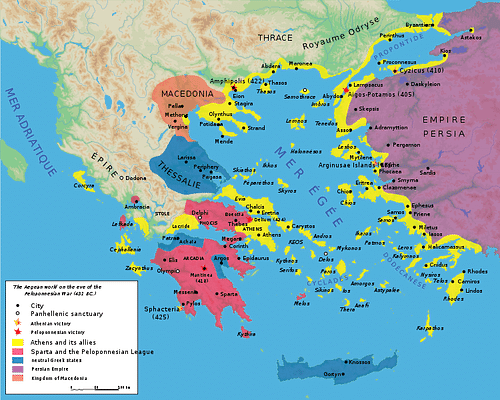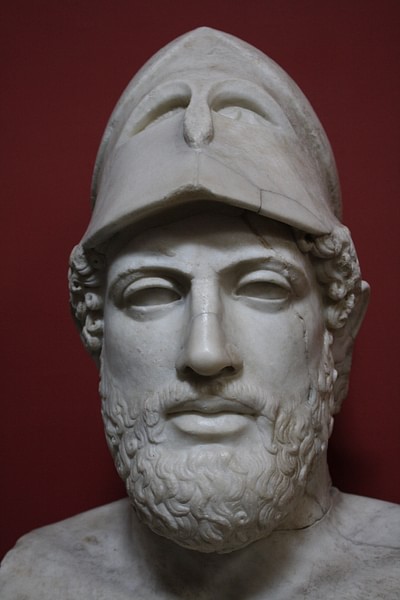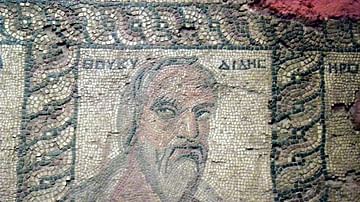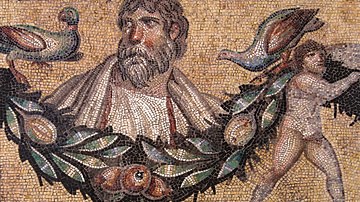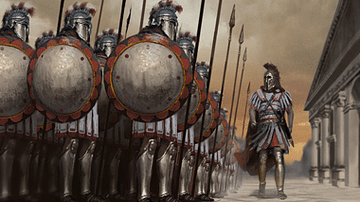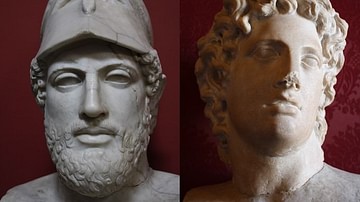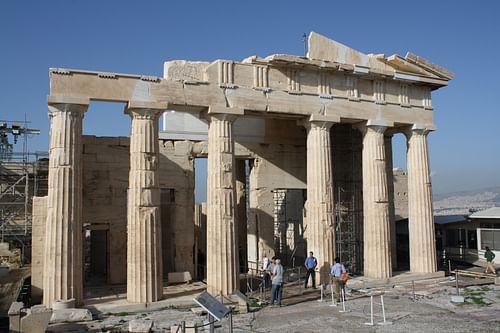
The Pentecontaetia (Pentekontætia, πεντηκονταετία) or “the account of the fifty years” is a term first used by Thucydides to describe, in Book 1, Sections 89 to 117 (1.89-117) of his History of the Peloponnesian War, the period between the Battle of Plataea in 479 BCE to the start of the Peloponnesian War in 432 BCE. The historian sought to describe how the Athenians “had become so powerful” (1.89.1) and to highlight those key events he believed most alarmed the Spartans and led to the Peloponnesian War. The period is widely considered as the “Golden Age of Athens” when many of ancient Greece's greatest works were produced in architecture, engineering, the arts, history, astronomy, and philosophy.
Thucydides further explains he had also “written about it and have made this digression” to correct the “very brief and inaccurate” chronology of Hellenikos of Lesbos (1.97.2), his contemporary, who wrote the first Atthis or “local history of Attica.” Thucydides also desired to draw clear distinctions between the “stated reasons” (lit. accusations or complaints) for the war and what he considered the “actual causes” (lit. truest explanation or motive).
Most scholars agree that this section of Thucydides' narrative stood incomplete and unpolished at the time of his death. The only other extant account of this time period, which survives today, remains Diodorus Siculus Book 11, Section 39 to Book 12, Section 28 (11.39-12.28).
Dating the Pentacontaetia
Thucydides begins with the Siege of Sestos (479 BCE) and ends with the Capitulation of Samos (439 BCE), so he covers only 40 years. He had, however, also discussed other events before the digression – such as the Epidamnus Affair, the Corinth-Corcyra Conflict, (435 BCE) as well as the Revolt and Siege of Poteidaia (433/2 BCE). He then describes the entire series of events taking place for “about 50 years” (1.118.2).
The Pentacontaetia began after the Persian Wars, with an offensive-defensive alliance of Greek poleis against Persia - The Delian League - but, within 30 years, it had morphed into an Athenian Hegemony and then one of Athenian Rule, where the League's resources became focused more on advancing Athenian desires at home and abroad rather than stopping or checking the might of Persia. Scholars typically divide this period into three phases, the first 15 years (479/8-465/4 BCE), the middle 20 years (465/4 – 445/4 BCE), and then the final 15 years (445/4 – 431/0 BCE). They define these phases by known “fixed points,” i.e. key events we can securely and firmly date, as opposed to clear changes in the direction of historical events.
We mark the end of the first phase with Pausanias (4.24.5) and Diodorus (11.70.1). They each date the Revolt of the Peloponnesian Helots to the 1st Year of the 79th Olympiad during the Archonship of Archidemedes. This dating more or less agrees with Thucydides: 465/4 BCE.
We mark the end of the second phase with the Thirty Year's Peace between Athens and Sparta, which, according to Thucydides (1.87.6; 2.2.1, 21.1), occurred in the Winter Months during the Archonship of Kallimachos – with which Diodorus agrees (12.7). Pausanias confirms the date – indicating the Peace took place in the 3rd Year of the 83rd Olympiad: 445/4 BCE.
The third and final phase ends with the first invasion of Attica by Sparta, the latter, which Thucydides attests (2.2.1) began the 15th year of the Thirty Years Peace during the final two months of Pythodorus's Archonship: 431/0 BCE.
Scholars, however, still debate the dates of occurrence and/or the chronological order for many events within each phase, as Thucydides does not in fact provide indicators for the bulk of them. In some cases, he dates events only in relation to other events. For example, we can date the Samian War to 441/0 BCE, since Thucydides tells us it unfolded during the 6th year of the Thirty Years Peace (1.115.2).
The Key Events of the Pentacontaetia
Scholars occasionally doubt the historicity of some events, most notably the “Peace of Kallias.” They also continually weigh the significance of other events, as well as the significance of several omissions in Thucydides' narrative, such as the Thirty Years Truce between Argos and Sparta. Historians and Classicists must reconstruct a more thorough accounting of the Pentacontaetia using epigraphic evidence (e.g. The Tribute Lists) and sporadic references to the time period in other authors such as Plutarch and Pausanias or notations made by various ancient commentators.
Scholars typically analyze events of this period topically: the External Policy and Actions of Athens, the Organization and Mechanizations of the Delian League, the Internal History of Athens, Biographical Accounts, and, finally, the Cultural History.
The first phase (479/8-465/4 BCE) includes united – or cooperative – Greek military operations to recover Persian dominated poleis as well as to free areas of Northern Greece and Asia Minor, which includes reducing piracy in the Aegean. It also notes the formation of the Delian League itself to the secession of Thasos. This phase also concerns the rebuilding of Athens' City Walls and beginning construction of walls around Peiraieus. Thucydides also notes the recall of the Spartan Pausanias and the ostracism of the Athenian Themistokles.
The second phase (465/4 – 445/4 BCE) includes the surrender of Thasos, Athenian led operations in Ithome, Tanagra and elsewhere, and the Egyptian Expedition. It also notes the expansion of the League, the relocation of the treasury from Delos to Athens, the “Peace of Kallias,” and the “First Peloponnesian War.” This phase also concerns the building of Athens' Long Walls to Piraeus, the restriction of her citizenship franchise, the establishment of various Athenian settlements, and the construction of the Parthenon. Thucydides also notes the ostracism and subsequent recall of the Athenian Kimon and the rise to prominence of the Athenian Pericles.
The third phase (445/4 – 431/0 BCE) includes Athenian operations against Samos, Pontos, Leukimme, Sybota, and Poteidaia. It also notes the attempt by Athens to institute a single coinage and common system of weights and measures, the foundation of Athenian colonies at Thurii, Amphipolis and elsewhere, and the installing of Athenian Magistrates in Delian League member poleis. This phase also concerns the dedication of Athena Parthenos and the building of the Propylaea. Thucydides also notes the ostracism of his namesake the Athenian Thucydides son of Melesias and the dominance of Pericles in Athenian affairs.
The general thrust of Athenian actions during the whole of the Pentecontaetia appeared aimed at establishing some form of political unity and peace for the bulk of the Hellenic world. Athenians used a variety of actions and tools to accomplish this goal: encouragement and enticement, political pressure, treaties, force, garrisons, colonization, suppression of revolts, elimination of local currency, and the unification of laws.
Many Greek poleis came to see Athenian actions as increasingly infringing on both their autonomy and liberty and thus a metamorphosis from a synodic League of equal member poleis to an Athenian Hegemony finally to a collection of mere tributaries under Athenian Rule.
Omissions By Thucydides
Thucydides, however, remains silent on the great building programs both in Athens and Eleusis and the development and expansion of Athenian festivals, especially the Panathenaia, nor does he mention the transfer of the League treasury to Athens – all of which illustrate clearly how Athenians used League resources more and more to glorify Athens and advance Athenian causes.
Thucydides omits as well several (apparently significant) military operations about the Aegean in addition to saying nothing concerning the establishment of Cleruchies (Athenian settlements on the territory of member poleis), nor does he cover internal political happenings within Athens between the Persian and Peloponnesian Wars. By the time the war with Sparta began, for example, Thucydides notes elsewhere that the Athenians had come to see they in fact ruled the League as a tyrant (2.63.3).
The Pentecontaetia marks the height of Athenian dominance and culture, which many scholars refer to as the “Golden Age of Athens.” Indeed, many of the ancient Greece's greatest works in architecture, engineering, art, tragedy, comedy, history, astronomy, and philosophy as well as many of the most notable ancient Greek personalities came from Athens during this period.
